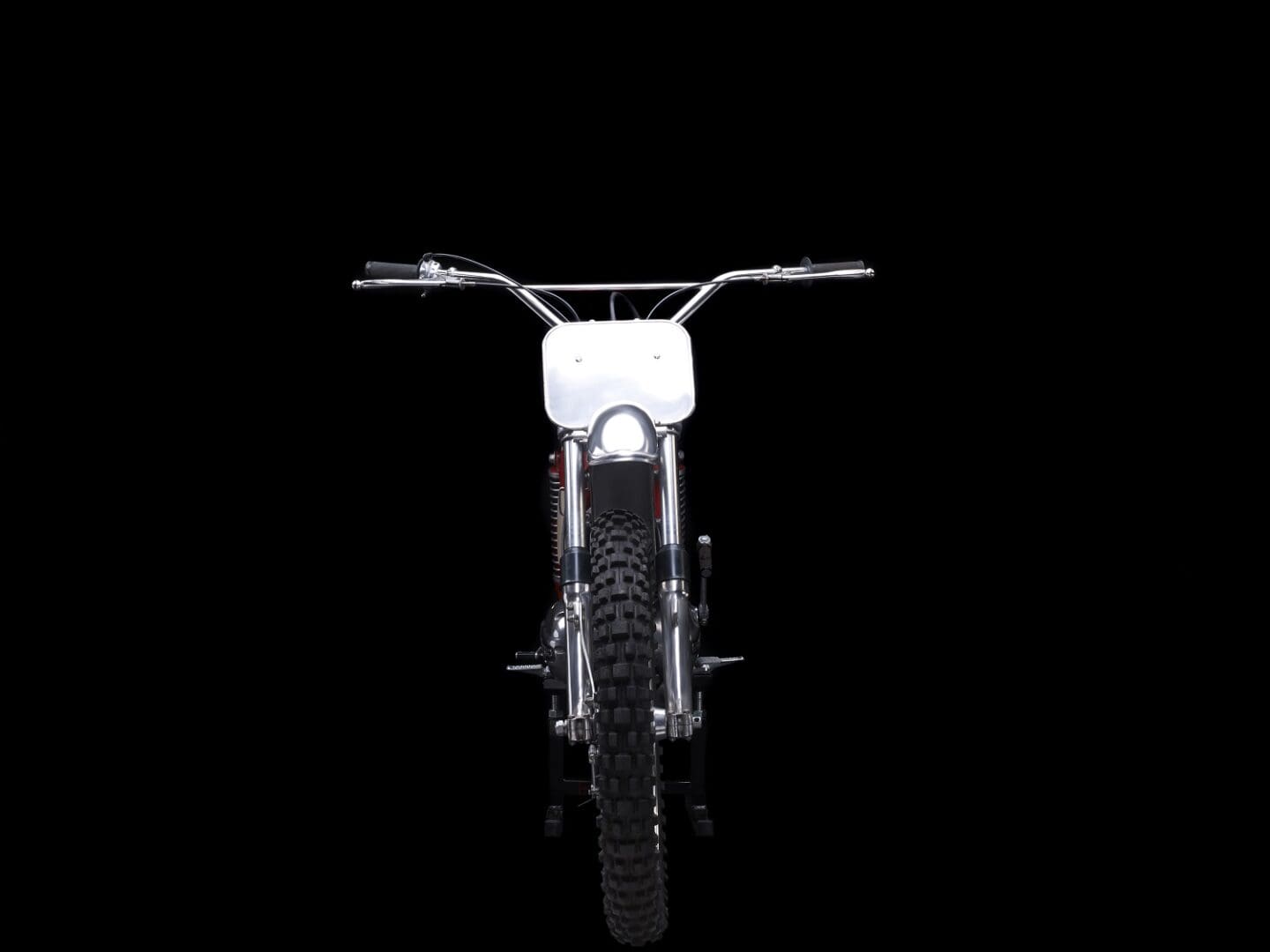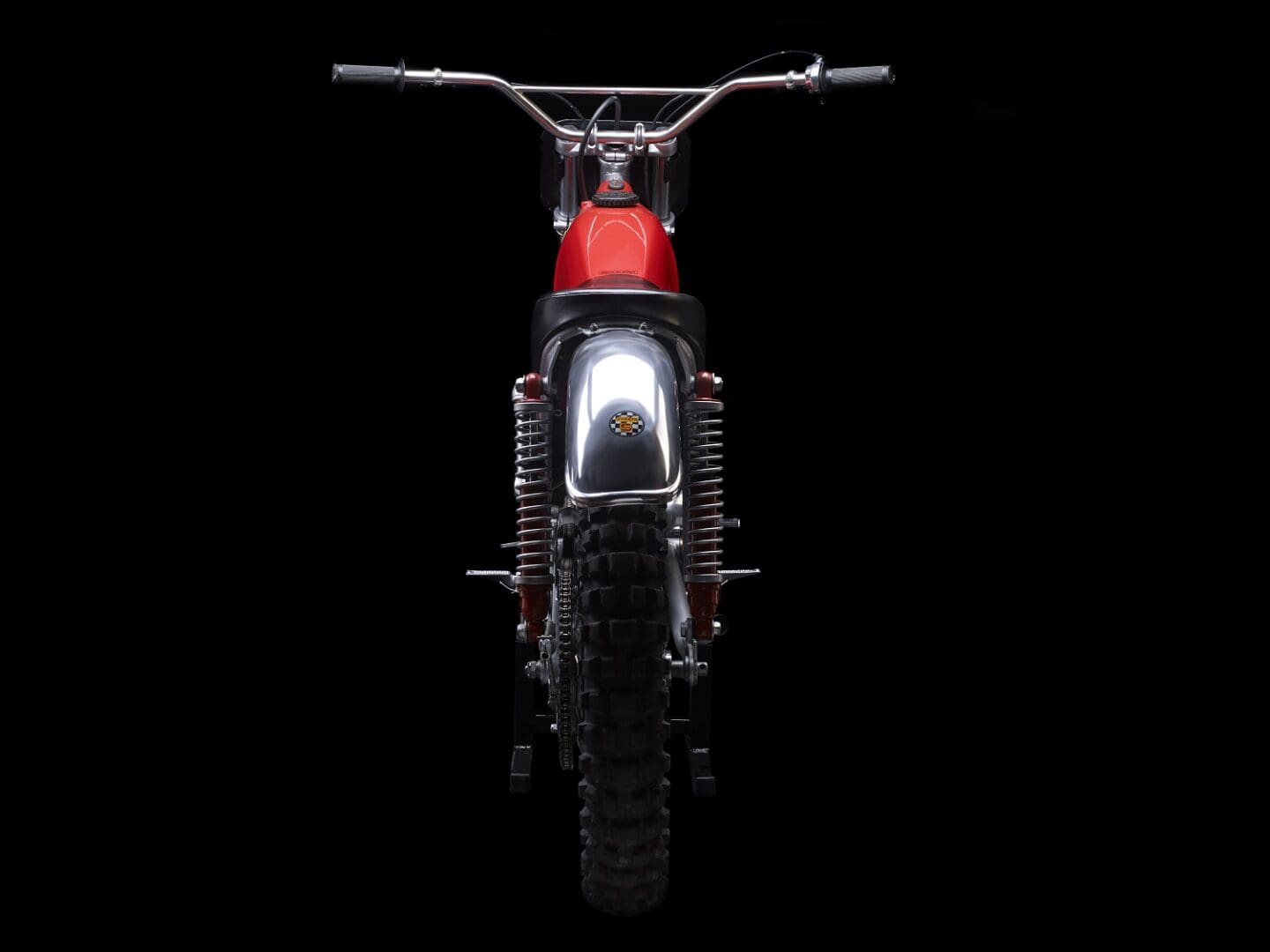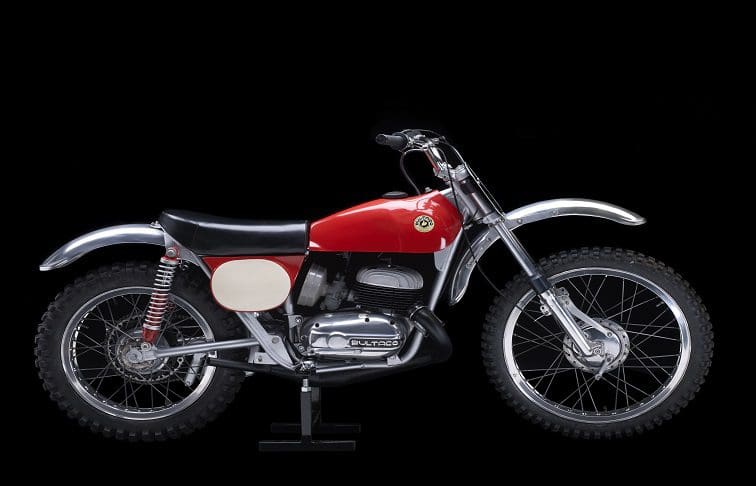1971 Bultaco Sherpa S 125
Model Information
1971 Bultaco 125 Sherpa S Model 63
In 1944 Fransico Bulto and Pedro Permanyer formed Montesa, Spain's first motorcycle manufacturer.
Bulto, the company's chief designer, then developed Montesa's 125cc engine, which would become successful in ISDT, road racing, and the Isle of Man TT. When Permanyer (the Director and primary shareholder) decided to cease Montesa's involvement in the competition, Bulto left (along with many of his colleagues in the racing department) and formed his own company in 1958.
The new company was named Bultaco Cemoto. Bultaco was said to be Bulto's telegram signature while at Montesa. It's the combination of the first four letters of his last name with the last three from his nickname "Paco." Cemoto is an acronym for Campania Espanola de Motores. The infamous thumbs-up logo apparently came about when Bulto noticed a British motorcycle racer giving the thumbs-up signal to his pit crew to signify all was well.
Within days of forming the new company, work started in an old farmhouse that Bulto owned, working on the development of a new 125cc two-stroke engine. In March of 1959, Bulto held a press conference introducing their first bike, the 125 Tralla 101 (Spanish for "whiplash") road bike. To the best of my knowledge, the first 125 motocross model was the Sherpa S (scrambles) Model 3B in 1960 or 1961, essentially a stripped-down Tralla. It featured a more powerful engine (14HP), better suspension and frame, and a 4-speed gearbox. The original model featured a 25mm side-float Amal carb, 428 chains, chrome-plated steel levers, and a steering damper.
The next iteration of the Sherpa S 125 was Model 45 for model years 1968-1969, the most notable difference being an up-pipe. The next and last Sherpa S 125 was the Sherpa S Mk2 Model 63 (the model featured here) from 1970-1971. The 125 shared nearly everything with the 175 & 200. Magazine tests praised its long wheelbase, Spanish Betor forks, lock nuts, aluminum alloy fenders and rims, and forward resting position of the kick-start lever as it didn't interfere with the rider's leg.
As Popular Cycling stated, "there is simply no area of weakness in power, suspension, or handling as long as the machine is kept turning at racing speeds. The 125 Sherpa S is strictly for racers".
In 1972 Bultaco replaced the 125 Sherpa S with the Pursang.
1971 Bultaco Sherpa S 125 Model 63
This nearly 100% original, matching numbers Sherpa S 125 only required a minor restoration. It's amazing that the original pipe, fiberglass tank, side panels, front number plate, tires, grips, and alloy fenders are original. In fact, the only non-original parts on this bike are the frame paint, rings, decal on the rear fender, kick start & shift rubber covers, and engine gaskets. None of the chrome parts were re-chromed, and nothing else was painted (the tank and side panels have their original gel coat). The seat, pipe, bars, cables, tires, rims, grips, chain, etc., are all original.
I acquired this bike in May 2013 from Jim Godo, who at the time lived in beautiful Traverse City, MI. Jim has a significant collection of MX bikes, a number of which have been featured in VMX Magazine. Jim grew up in Michigan, and if I recall, he actually purchased a 1971 Sherpa S 125 in 1971 and raced motocross for the first time.
Nobody forgets their first motocross race, and Jim was no exception, fondly recalling racing with no protective gear other than his helmet, goggles, and a kidney belt! He also keenly remembered his brand-new Sherpa S being covered in Cosmoline (a rust preventative), which the factory used to prevent corrosion of the metal parts from exposure to the sea air during boat transit across the Atlantic. Determined to find a Sherpa S similar to the one he had raced in 1971, Jim purchased this bike in 2011 from a guy who acquired it from the original owner. The original owner purchased this bike on April 5, 1971, in Maryland and was actually issued a Certificate of Title (very unusual for an MX bike).
Thankfully, the previous owners appreciated this bike as much as I do, whereby it has been stored indoors for the past 40 years. Consequently, everyone can now see what a 1971 Bultaco Sherpa S 125 looked like when sitting in their local dealer showroom over 40 years ago.




